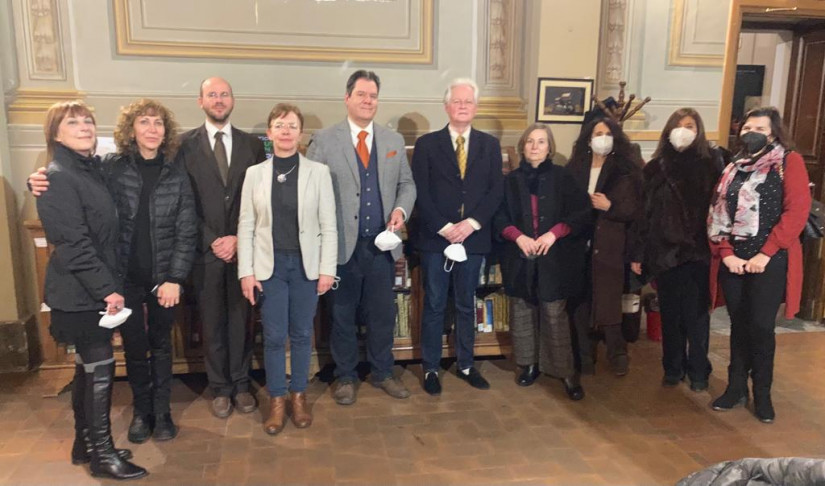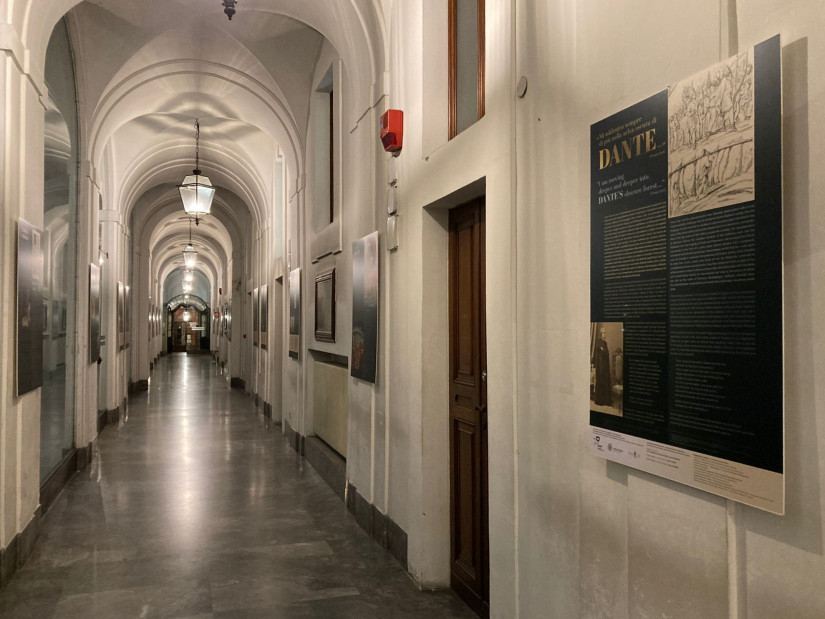Dante exhibition now on display at Conservatorio Santa Cecilia
Three of our colleagues, Dóra Bodrogai, Krisztina Halász and Anna Peternák prepared a poster exhibition, which was presented not only at the Academy of Music, Budapest in Hungarian-English format, but also at the Accademia d'Ungheria in Roma and at the Palazzo Lercari, Albano, in an Italian-English version. After these two institutions, the exhibition is currently on display at the Conservatorio Santa Cecilia, Rome.
Three of our colleagues, Dóra Bodrogai, Krisztina Halász and Anna Peternák prepared a poster exhibition, which was presented not only at the Academy of Music, Budapest in Hungarian-English format, but also at the Accademia d'Ungheria in Roma and at the Palazzo Lercari, Albano, in an Italian-English version. After these two institutions, the exhibition is currently on display at the Conservatorio Santa Cecilia, Rome, thanks to the joint effort of the Accademia and the Conservatorio. The opening of the exhibition took place on 26 January, led by musicologist János Herzog, and it can be visited until 25 February.

From left to right: Cecilia Campa, professor at Conservatorio di Santa Cecilia; Carla Conti, professor at Conservatorio di Santa Cecilia; Gábor Kudar, director of Accademia d'Ungheria in Roma; Gyöngyi Komlóssy, secretary of Accademia d'Ungheria in Roma; Roberto Giuliani, director of Conservatorio di Santa Cecilia; Johann Herczog, artistic director of Fondazione Giovanni Pierluigi da Palestrina; Antonella Ceravolo, professor at Conservatorio di Santa Cecilia; Alessandra Torchiani, professor at Conservatorio di Santa Cecilia; Maura Pansini, professor at Conservatorio di Santa Cecilia; Maria Giuliana Tucci, professor at Conservatorio di Santa Cecilia
Liszt’s activities were connected to the Accademia Santa Cecilia, predecessor of today’s Conservatorio, on many levels. When he visited Rome for the first time during the spring of 1839, the Accademia elected him a honorary member for his merits as a pianist. Having settled down in Rome in 1861, Liszt sought to improve the musical life and education of the city as an active member and counsellor of the Accademia until his death. The Sala Dante, also in Rome, was inaugurated with a performance of his Dante Symphony in 1866.

The exhibition entitled “I’m deeper and deeper in Dante’s dark forest…” focuses on the artistic relationship between Liszt and Dante. The composer, as many other 19th-century artists, could not avoid Dante’s influence for his entire life, and this influence can well be traced through his oeuvre. The exhibition not only demonstrates Liszt’s keen interest in the Italian poet and his Dante-themed works, but also places them in context by presenting Dante’s life and work, and briefly explaining the 19th-century “Dantemania” with a couple of examples (also related to Liszt).




